TensorFlow 1.x学习(系列二 :1):基本概念TensorFlow的基本介绍,图,会话,会话中的run(),placeholder(),常见的报错
目录
- 1.基本介绍
- 2.图的结构
- 3.会话,会话的run方法
- 4.placeholder
- 5.返回值异常
写在前边的话:之前发布过一个关于TensorFlow1.x的转载系列,自己将基本的TensorFlow操作敲了一遍,但是仍然有很多地方理解的不够深入。所以重开一个系列,跟着网上找到的教程边听边再敲一遍。最终的目的是实现一个新闻分类的demo,代码已有但是之前没有看懂。再往后应该会出一个pytorch的系列,最后目的是将tensorflow1.x的代码用pytorch再实现一遍。
1.基本介绍
tensorflow1.x 有其独有的语法体系,不同于Python代码的是,自定义的变量和函数无法直接输出结果,必须要在会话中完成该操作。
import tensorflow as tf
C:\Anaconda\envs\tensorflow16\lib\site-packages\tensorflow\python\framework\dtypes.py:517: FutureWarning: Passing (type, 1) or '1type' as a synonym of type is deprecated; in a future version of numpy, it will be understood as (type, (1,)) / '(1,)type'._np_qint8 = np.dtype([("qint8", np.int8, 1)])
C:\Anaconda\envs\tensorflow16\lib\site-packages\tensorflow\python\framework\dtypes.py:518: FutureWarning: Passing (type, 1) or '1type' as a synonym of type is deprecated; in a future version of numpy, it will be understood as (type, (1,)) / '(1,)type'._np_quint8 = np.dtype([("quint8", np.uint8, 1)])
C:\Anaconda\envs\tensorflow16\lib\site-packages\tensorflow\python\framework\dtypes.py:519: FutureWarning: Passing (type, 1) or '1type' as a synonym of type is deprecated; in a future version of numpy, it will be understood as (type, (1,)) / '(1,)type'._np_qint16 = np.dtype([("qint16", np.int16, 1)])
C:\Anaconda\envs\tensorflow16\lib\site-packages\tensorflow\python\framework\dtypes.py:520: FutureWarning: Passing (type, 1) or '1type' as a synonym of type is deprecated; in a future version of numpy, it will be understood as (type, (1,)) / '(1,)type'._np_quint16 = np.dtype([("quint16", np.uint16, 1)])
C:\Anaconda\envs\tensorflow16\lib\site-packages\tensorflow\python\framework\dtypes.py:521: FutureWarning: Passing (type, 1) or '1type' as a synonym of type is deprecated; in a future version of numpy, it will be understood as (type, (1,)) / '(1,)type'._np_qint32 = np.dtype([("qint32", np.int32, 1)])
C:\Anaconda\envs\tensorflow16\lib\site-packages\tensorflow\python\framework\dtypes.py:526: FutureWarning: Passing (type, 1) or '1type' as a synonym of type is deprecated; in a future version of numpy, it will be understood as (type, (1,)) / '(1,)type'.np_resource = np.dtype([("resource", np.ubyte, 1)])
# 实现一个加法运算
a = tf.constant(5.0)
b = tf.constant(6.0)
sum1 = tf.add(a,b)# 查看结果
print(a,b)
print(sum1)
Tensor("Const:0", shape=(), dtype=float32) Tensor("Const_1:0", shape=(), dtype=float32)
Tensor("Add:0", shape=(), dtype=float32)
# 在会话中实现
with tf.Session() as sess:print(sess.run(sum1))
11.0
2.图的结构
一些概念:
tensor:张量
operation(op):专门运算的操作节点(注:所有操作都是一个op)
图(graph):你的整个程序的结构
会话(Session):运算程序的图
# 查看默认的图,根据打印的结果可以看到,图的在内存中的位置
graph = tf.get_default_graph()
graph
<tensorflow.python.framework.ops.Graph at 0x1c82a43df60>
# 打印各op的graph属性可以看到,地址都一样,都是该图的一部分
with tf.Session() as sess:print(sess.run(sum1))print(a.graph)print(sum1.graph)print(sess.graph)
11.0
<tensorflow.python.framework.ops.Graph object at 0x000001C82A43DF60>
<tensorflow.python.framework.ops.Graph object at 0x000001C82A43DF60>
<tensorflow.python.framework.ops.Graph object at 0x000001C82A43DF60>
# 一般一个程序里只有一个图,那么如何定义其他图呢
g = tf.Graph()
print(g)
<tensorflow.python.framework.ops.Graph object at 0x000001C82A48E588>
# 可以看到新定义的图和之前的图内存位置并不同
with g.as_default():c = tf.constant(11.0)print(c)print(c.graph)
Tensor("Const:0", shape=(), dtype=float32)
<tensorflow.python.framework.ops.Graph object at 0x000001C82A48E588>
总结:
创建一张图包含了一组op和tensor,上下文环境
op:只要使用tensorflow的API定义的函数都是OP
tensor:指代的就是数据
3.会话,会话的run方法
理解:
可以将tensorflow看做两部分:
前端系统:定义程序的图结构后端系统:运算图结构
会话的作用:
1.运行图的结构2.分配资源计算3.掌握资源(变量的资源,队列,线程)
一次只能运行一个图,可以在会话中指定图去运行tf.Session(graph = )
# 一次只能运行一个图,可以在会话中指定图去运行tf.Session(graph = )
with tf.Session() as sess:print(sess.run(c))print(a.graph)print(sum1.graph)print(sess.graph)# 会报错,因为c是别的图的一部分
# ValueError: Fetch argument <tf.Tensor 'Const:0' shape=() dtype=float32> cannot be interpreted as a Tensor. (Tensor Tensor("Const:0", shape=(), dtype=float32) is not an element of this graph.)
---------------------------------------------------------------------------ValueError Traceback (most recent call last)C:\Anaconda\envs\tensorflow16\lib\site-packages\tensorflow\python\client\session.py in __init__(self, fetches, contraction_fn)281 self._unique_fetches.append(ops.get_default_graph().as_graph_element(
--> 282 fetch, allow_tensor=True, allow_operation=True))283 except TypeError as e:C:\Anaconda\envs\tensorflow16\lib\site-packages\tensorflow\python\framework\ops.py in as_graph_element(self, obj, allow_tensor, allow_operation)3458 with self._lock:
-> 3459 return self._as_graph_element_locked(obj, allow_tensor, allow_operation)3460 C:\Anaconda\envs\tensorflow16\lib\site-packages\tensorflow\python\framework\ops.py in _as_graph_element_locked(self, obj, allow_tensor, allow_operation)3537 if obj.graph is not self:
-> 3538 raise ValueError("Tensor %s is not an element of this graph." % obj)3539 return objValueError: Tensor Tensor("Const:0", shape=(), dtype=float32) is not an element of this graph.
During handling of the above exception, another exception occurred:
ValueError Traceback (most recent call last)<ipython-input-10-c64ee74128b9> in <module>1 # 一次只能运行一个图2 with tf.Session() as sess:
----> 3 print(sess.run(c))4 print(a.graph)5 print(sum1.graph)C:\Anaconda\envs\tensorflow16\lib\site-packages\tensorflow\python\client\session.py in run(self, fetches, feed_dict, options, run_metadata)903 try:904 result = self._run(None, fetches, feed_dict, options_ptr,
--> 905 run_metadata_ptr)906 if run_metadata:907 proto_data = tf_session.TF_GetBuffer(run_metadata_ptr)C:\Anaconda\envs\tensorflow16\lib\site-packages\tensorflow\python\client\session.py in _run(self, handle, fetches, feed_dict, options, run_metadata)1120 # Create a fetch handler to take care of the structure of fetches.1121 fetch_handler = _FetchHandler(
-> 1122 self._graph, fetches, feed_dict_tensor, feed_handles=feed_handles)1123 1124 # Run request and get response.C:\Anaconda\envs\tensorflow16\lib\site-packages\tensorflow\python\client\session.py in __init__(self, graph, fetches, feeds, feed_handles)425 """426 with graph.as_default():
--> 427 self._fetch_mapper = _FetchMapper.for_fetch(fetches)428 self._fetches = []429 self._targets = []C:\Anaconda\envs\tensorflow16\lib\site-packages\tensorflow\python\client\session.py in for_fetch(fetch)251 if isinstance(fetch, tensor_type):252 fetches, contraction_fn = fetch_fn(fetch)
--> 253 return _ElementFetchMapper(fetches, contraction_fn)254 # Did not find anything.255 raise TypeError('Fetch argument %r has invalid type %r' % (fetch,C:\Anaconda\envs\tensorflow16\lib\site-packages\tensorflow\python\client\session.py in __init__(self, fetches, contraction_fn)287 except ValueError as e:288 raise ValueError('Fetch argument %r cannot be interpreted as a '
--> 289 'Tensor. (%s)' % (fetch, str(e)))290 except KeyError as e:291 raise ValueError('Fetch argument %r cannot be interpreted as a 'ValueError: Fetch argument <tf.Tensor 'Const:0' shape=() dtype=float32> cannot be interpreted as a Tensor. (Tensor Tensor("Const:0", shape=(), dtype=float32) is not an element of this graph.)
指定图运行
# 指定图运行
with tf.Session(graph = g) as sess:print(sess.run(c))print(a.graph) # 这个能正常输出是因为在会话外就定义过print(sum1.graph) # 同上print(sess.graph)
11.0
<tensorflow.python.framework.ops.Graph object at 0x000001C82A43DF60>
<tensorflow.python.framework.ops.Graph object at 0x000001C82A43DF60>
<tensorflow.python.framework.ops.Graph object at 0x000001C82A48E588>
关于sess.run(fetches,feed_dict=None,graph = None):
1.作用:运行ops和计算tensor,相当于是启动整个图2.sess.close():与sess.run()相对应,关闭资源。但是在使用上下文管理器的结构中(with tf.Session as sess:...)可以省略
其他:
3.tf.Session() 中还有另外一个参数config (tf.Session(config = tf.ConfigPorto(log_device_placement=True)))作用是显示你的op具体是在那个设备上运行的以及其他详细情况。4.交互式:在命令行里使用,tf.interactiveSession(),方便调试,结合变量.eval()比较方便
例1:一次run多个
# 例1:一次run多个
with tf.Session() as sess:print(sess.run([a,b,sum1]))
[5.0, 6.0, 11.0]
2-1:run只能运行op和tensor
# 例2-1:run只能运行op和tensor
var1 = 2
var2 = 3
sum2 = var1 + var2
with tf.Session() as sess:print(sess.run(sum2))# TypeError: Fetch argument 5 has invalid type <class 'int'>, must be a string or Tensor. (Can not convert a int into a Tensor or Operation.)
---------------------------------------------------------------------------TypeError Traceback (most recent call last)C:\Anaconda\envs\tensorflow16\lib\site-packages\tensorflow\python\client\session.py in __init__(self, fetches, contraction_fn)281 self._unique_fetches.append(ops.get_default_graph().as_graph_element(
--> 282 fetch, allow_tensor=True, allow_operation=True))283 except TypeError as e:C:\Anaconda\envs\tensorflow16\lib\site-packages\tensorflow\python\framework\ops.py in as_graph_element(self, obj, allow_tensor, allow_operation)3458 with self._lock:
-> 3459 return self._as_graph_element_locked(obj, allow_tensor, allow_operation)3460 C:\Anaconda\envs\tensorflow16\lib\site-packages\tensorflow\python\framework\ops.py in _as_graph_element_locked(self, obj, allow_tensor, allow_operation)3547 raise TypeError("Can not convert a %s into a %s." % (type(obj).__name__,
-> 3548 types_str))3549 TypeError: Can not convert a int into a Tensor or Operation.
During handling of the above exception, another exception occurred:
TypeError Traceback (most recent call last)<ipython-input-13-31c14cd7002b> in <module>4 sum2 = var1 + var25 with tf.Session() as sess:
----> 6 print(sess.run(sum2))C:\Anaconda\envs\tensorflow16\lib\site-packages\tensorflow\python\client\session.py in run(self, fetches, feed_dict, options, run_metadata)903 try:904 result = self._run(None, fetches, feed_dict, options_ptr,
--> 905 run_metadata_ptr)906 if run_metadata:907 proto_data = tf_session.TF_GetBuffer(run_metadata_ptr)C:\Anaconda\envs\tensorflow16\lib\site-packages\tensorflow\python\client\session.py in _run(self, handle, fetches, feed_dict, options, run_metadata)1120 # Create a fetch handler to take care of the structure of fetches.1121 fetch_handler = _FetchHandler(
-> 1122 self._graph, fetches, feed_dict_tensor, feed_handles=feed_handles)1123 1124 # Run request and get response.C:\Anaconda\envs\tensorflow16\lib\site-packages\tensorflow\python\client\session.py in __init__(self, graph, fetches, feeds, feed_handles)425 """426 with graph.as_default():
--> 427 self._fetch_mapper = _FetchMapper.for_fetch(fetches)428 self._fetches = []429 self._targets = []C:\Anaconda\envs\tensorflow16\lib\site-packages\tensorflow\python\client\session.py in for_fetch(fetch)251 if isinstance(fetch, tensor_type):252 fetches, contraction_fn = fetch_fn(fetch)
--> 253 return _ElementFetchMapper(fetches, contraction_fn)254 # Did not find anything.255 raise TypeError('Fetch argument %r has invalid type %r' % (fetch,C:\Anaconda\envs\tensorflow16\lib\site-packages\tensorflow\python\client\session.py in __init__(self, fetches, contraction_fn)284 raise TypeError('Fetch argument %r has invalid type %r, '285 'must be a string or Tensor. (%s)' %
--> 286 (fetch, type(fetch), str(e)))287 except ValueError as e:288 raise ValueError('Fetch argument %r cannot be interpreted as a 'TypeError: Fetch argument 5 has invalid type <class 'int'>, must be a string or Tensor. (Can not convert a int into a Tensor or Operation.)
例2-2 有重载的机制,默认会给运算符重载成op类型
# 例2-2 有重载的机制,默认会给运算符重载成op类型
var1 = 2.0
sum2 = a + var1
with tf.Session() as sess:print(sess.run(sum2))
7.0
4.placeholder
应用场景:训练模型时需要实时提供数据去训练
介绍:
1.placeholder是一个占位符,使用中充当feed_dict字典中的键2.参数:placeholder(dtype,shape = None,name = None)
例1 :placeholder的使用
# 例1 :placeholder的使用
plt = tf.placeholder(tf.float32,[2,3])with tf.Session(config = tf.ConfigProto(log_device_placement = True)) as sess:print(sess.run(plt,feed_dict = {plt:[[1,2,3],[4,5,6]]}))
[[1. 2. 3.][4. 5. 6.]]
例2 :placeholder的使用2(样本行数不固定)
# 例2 :placeholder的使用2(样本行数不固定)
plt = tf.placeholder(tf.float32,[None,3]) # n行3列with tf.Session(config = tf.ConfigProto(log_device_placement = True)) as sess:print(sess.run(plt,feed_dict = {plt:[[1,2,3],[4,5,6],[7,8,9]]}))
[[1. 2. 3.][4. 5. 6.][7. 8. 9.]]
5.返回值异常
RuntimeError: 如果它Session处于无效状态(例如已关闭)。
TypeError:如果fetches或feed_dict键是不合适的类型。
ValueError:如果fetches或feed_dict键无效或引用tensor不存在
相关文章:
:基本概念TensorFlow的基本介绍,图,会话,会话中的run(),placeholder(),常见的报错)
TensorFlow 1.x学习(系列二 :1):基本概念TensorFlow的基本介绍,图,会话,会话中的run(),placeholder(),常见的报错
目录1.基本介绍2.图的结构3.会话,会话的run方法4.placeholder5.返回值异常写在前边的话:之前发布过一个关于TensorFlow1.x的转载系列,自己将基本的TensorFlow操作敲了一遍,但是仍然有很多地方理解的不够深入。所以重开一个系列&am…...

javaEE 初阶 — 关于 IPv4、IPv6 协议、NAT(网络地址转换)、动态分配 IP 地址 的介绍
文章目录1. IPv42. IPv63. NAT4. 动态分配 IP 地址1. IPv4 在互联网的世界中只有 0 和1 ,所以每个人都有一个由 0 和 1 组成的地址来让别人找到你。 这段由 0 和 1 组成的地址叫 IP 地址,这是互联网的基础资源,可以简单的理解为互联网的土地。…...
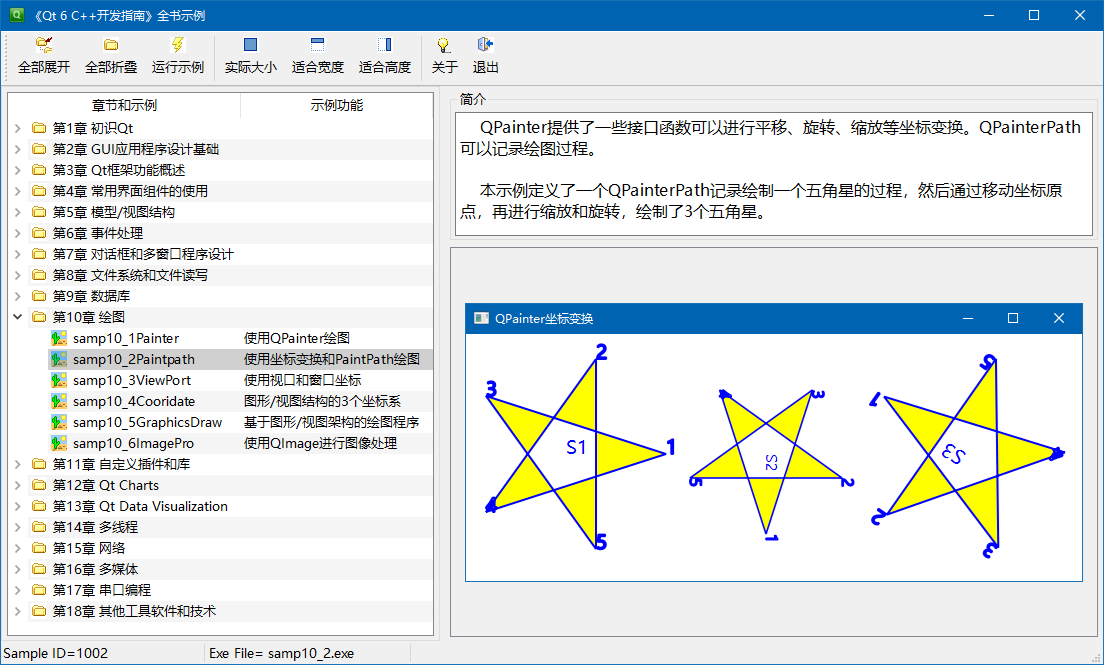
《Qt 6 C++开发指南》简介
我们编写的新书《Qt 6 C开发指南》在2月份终于正式发行销售了,这本书是对2018年5月出版的《Qt 5.9 C开发指南》的重磅升级。以下是本书前言的部分内容,算是对《Qt 6 C开发指南》的一个简介。1.编写本书的目的《Qt 5.9C开发指南》是我写的第一…...
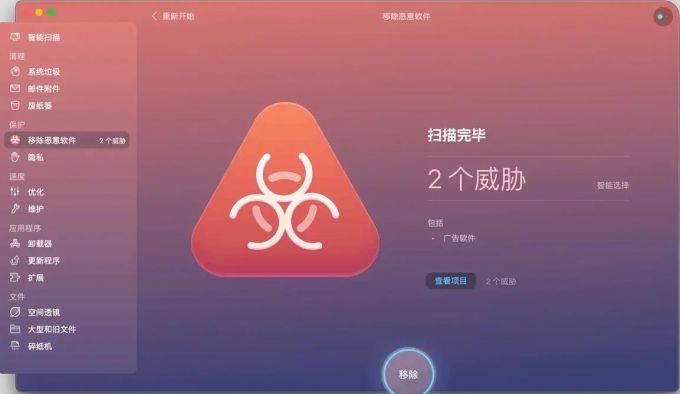
CleanMyMac是什么清理软件?及使用教程
你知道CleanMyMac是什么吗?它的字面意思为“清理我的Mac”,作为软件,那就是一款Mac清理工具,Mac OS X 系统下知名系统清理软件,是数以万计的Mac用户的选择。它可以流畅地与系统性能相结合,只需简单的步骤就…...

Linux小黑板(9):共享内存
"My poor lost soul"上章花了不少的篇幅讲了讲基于管道((匿名、命名))技术实现的进程间通信。进程为什么需要通信?目的是为了完成进程间的"协同",提高处理数据的能力、优化业务逻辑的实现等等,在linux中我们已经谈过了一个通信的大类…...
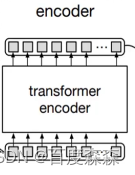
Detr源码解读(mmdetection)
Detr源码解读(mmdetection) 1、原理简要介绍 整体流程: 在给定一张输入图像后,1)特征向量提取: 首先经过ResNet提取图像的最后一层特征图F。注意此处仅仅用了一层特征图,是因为后续计算复杂度原因,另外&am…...
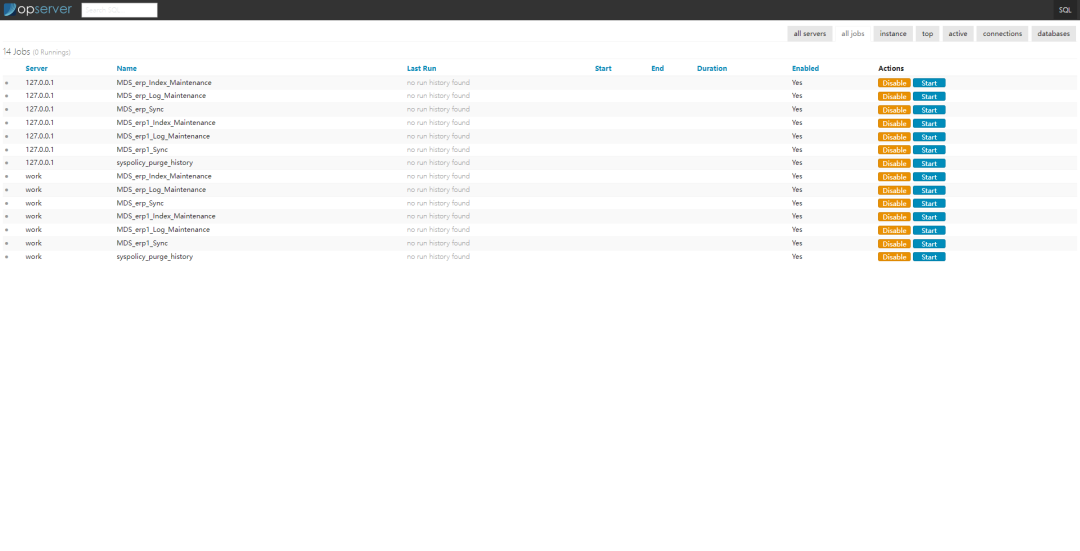
一个.Net Core开发的,撑起月6亿PV开源监控解决方案
更多开源项目请查看:一个专注推荐.Net开源项目的榜单 项目发布后,对于我们程序员来说,项目还不是真正的结束,保证项目的稳定运行也是非常重要的,而对于服务器的监控,就是保证稳定运行的手段之一。对数据库、…...
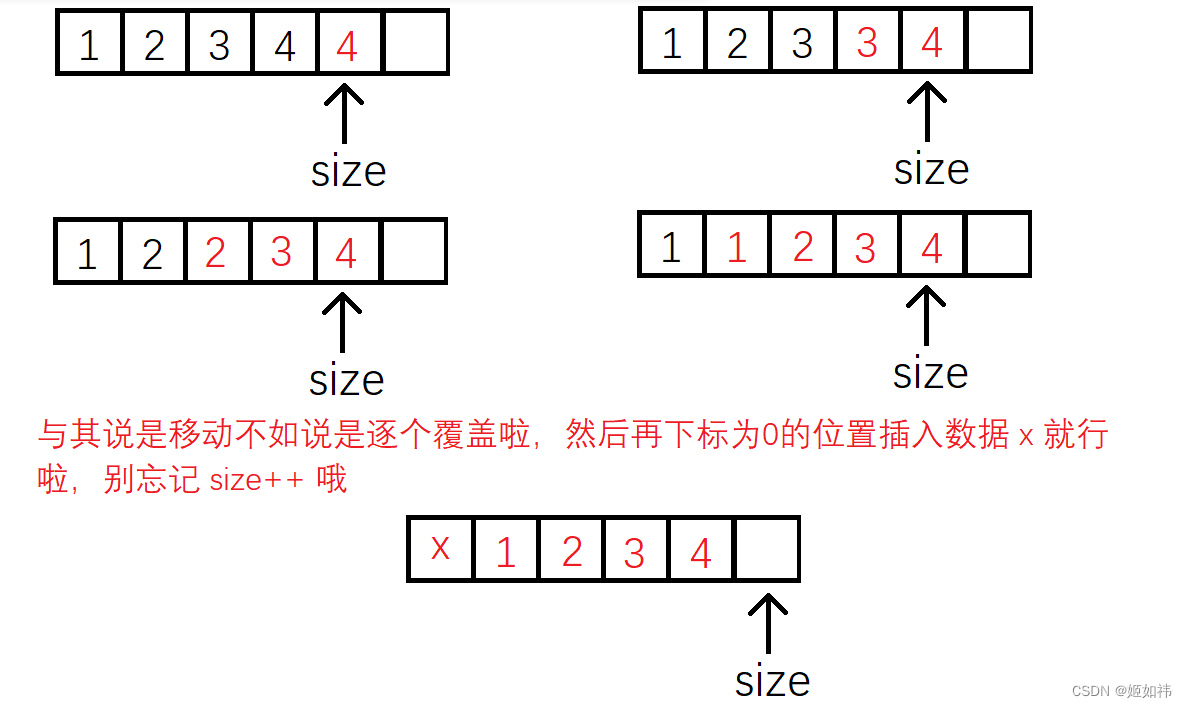
C语言数据结构初阶(2)----顺序表
目录 1. 顺序表的概念及结构 2. 动态顺序表的接口实现 2.1 SLInit(SL* ps) 的实现 2.2 SLDestory(SL* ps) 的实现 2.3 SLPrint(SL* ps) 的实现 2.4 SLCheckCapacity(SL* ps) 的实现 2.5 SLPushBack(SL* ps, SLDataType x) 的实现 2.6 SLPopBack(SL* ps) 的实现 2.7 SLP…...

K8S常用命令速查手册
K8S常用命令速查手册一. K8S日常维护常用命令1.1 查看kubectl版本1.2 启动kubelet1.3 master节点执行查看所有的work-node节点列表1.4 查看所有的pod1.5 检查kubelet运行状态排查问题1.6 诊断某pod故障1.7 诊断kubelet故障方式一1.8 诊断kubelet故障方式二二. 端口策略相关2.1 …...

Linux系统下命令行安装MySQL5.6+详细步骤
1、因为想在腾讯云的服务器上创建自己的数据库,所以我在这里是通过使用Xshell 7来连接腾讯云的远程服务器; 2、Xshell 7与服务器连接好之后,就可以开始进行数据库的安装了(如果服务器曾经安装过数据库,得将之前安装的…...
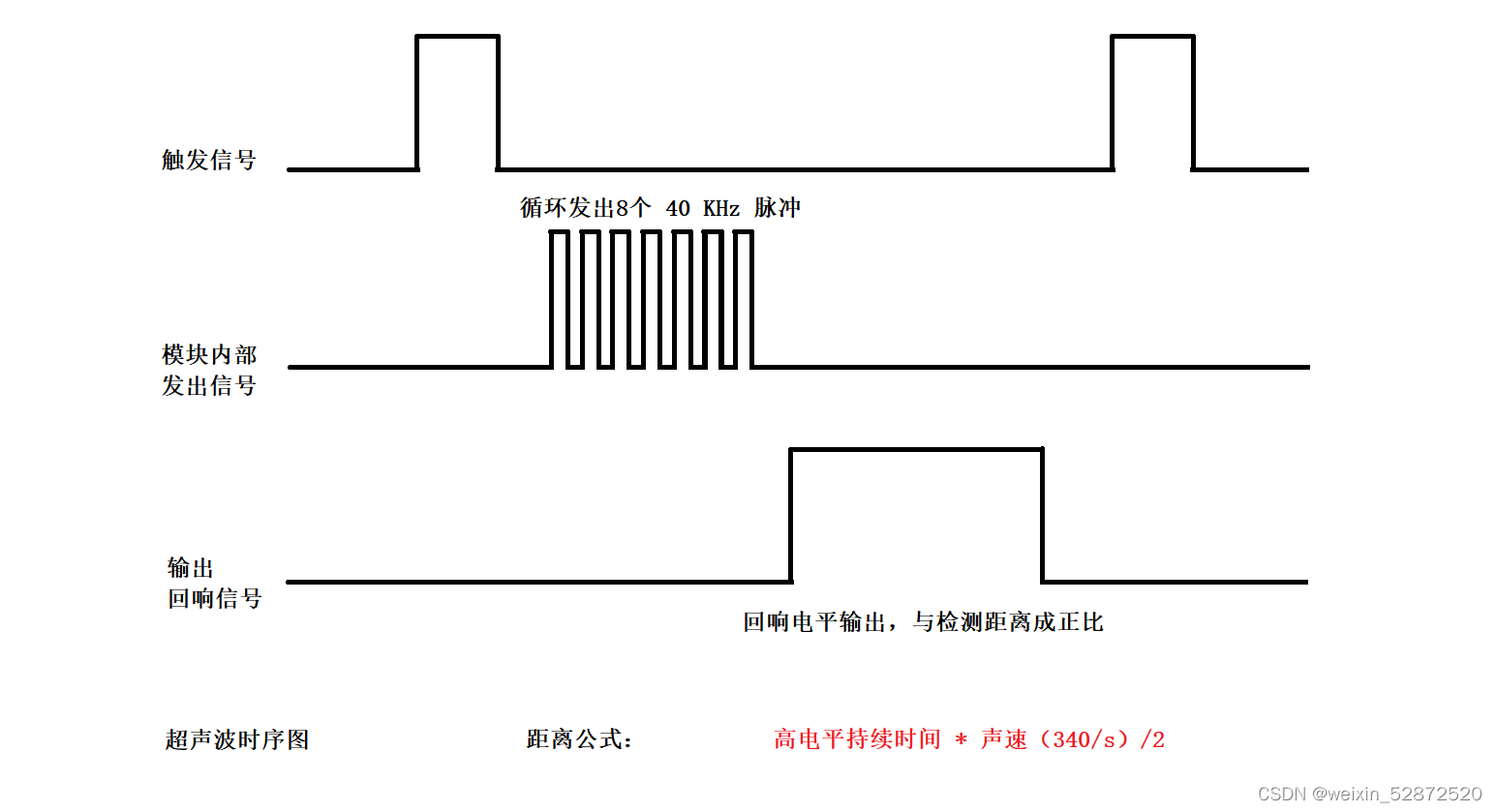
13.STM32超声波模块讲解与实战
目录 1.超声波模块讲解 2.超声波时序图 3.超声波测距步骤 4.项目实战 1.超声波模块讲解 超声波传感器模块上面通常有两个超声波元器件,一个用于发射,一个用于接收。电路板上有4个引脚:VCC GND Trig(触发)ÿ…...

逆向之Windows PE结构
写在前面 对于Windows PE文件结构,个人认为还是非常有必要掌握和了解的,不管是在做逆向分析、免杀、病毒分析,脱壳加壳都是有着非常重要的技能。但是PE文件的学习又是一个非常枯燥过程,希望本文可以帮你有一个了解。 PE文件结构…...

ACL是什么
目录 一、ACL是什么 二、ACL的使用:setacl与getacl 1)针对特定使用者的方式: 1. 创建acl_test1后设置其权限 2. 读取acl_test1的权限 2)针对特定群组的方式: 3)针对有效权限 mask 的设置方式…...
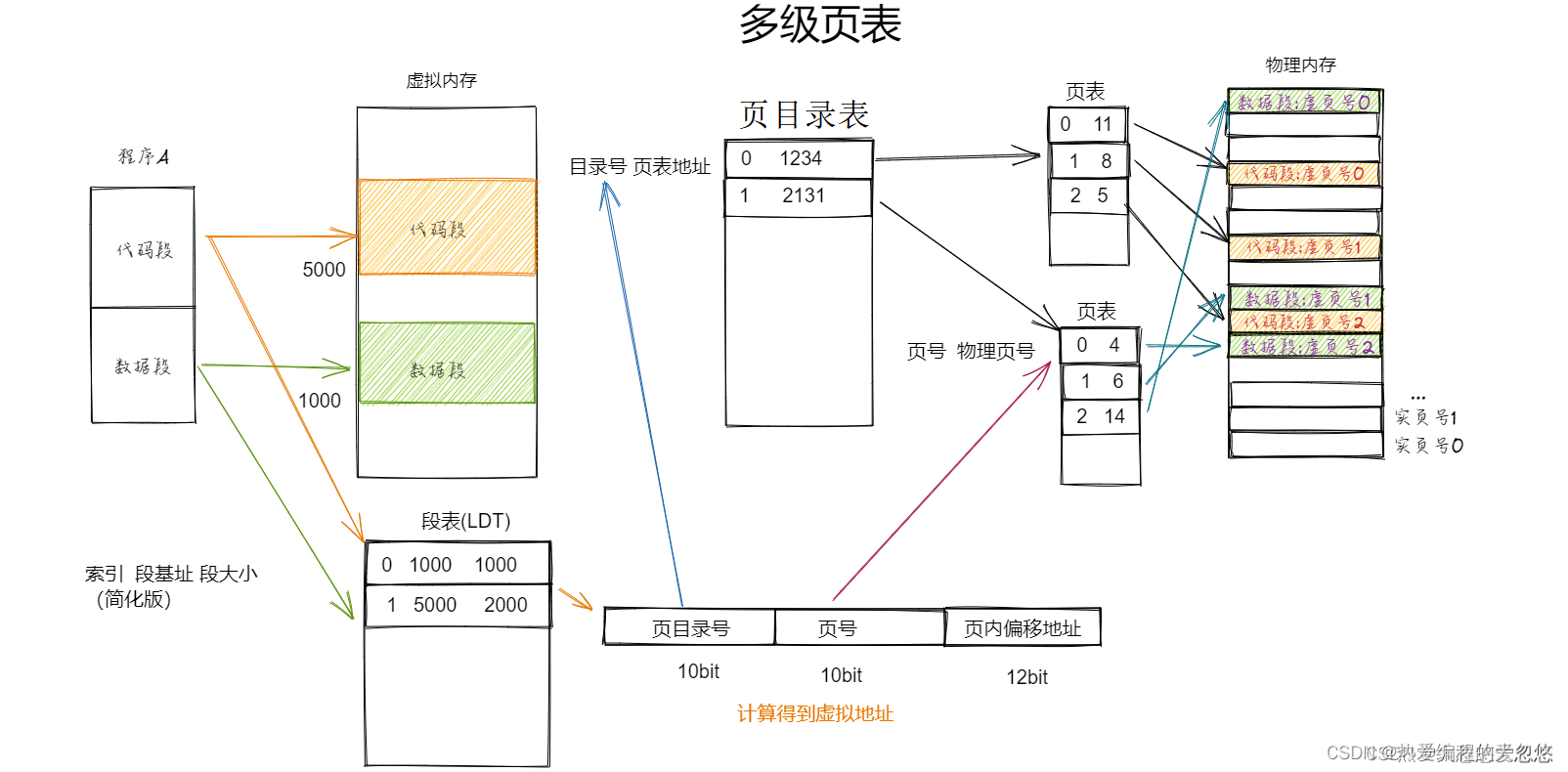
操作系统核心知识点整理--内存篇
操作系统核心知识点整理--内存篇按段对内存进行管理内存分区内存分页为什么需要多级页表TLB解决了多级页表什么样的缺陷?TLB缓存命中率高的原理是什么?段页结合: 为什么需要虚拟内存?虚拟地址到物理地址的转换过程段页式管理下程序如何载入内存?页面置…...
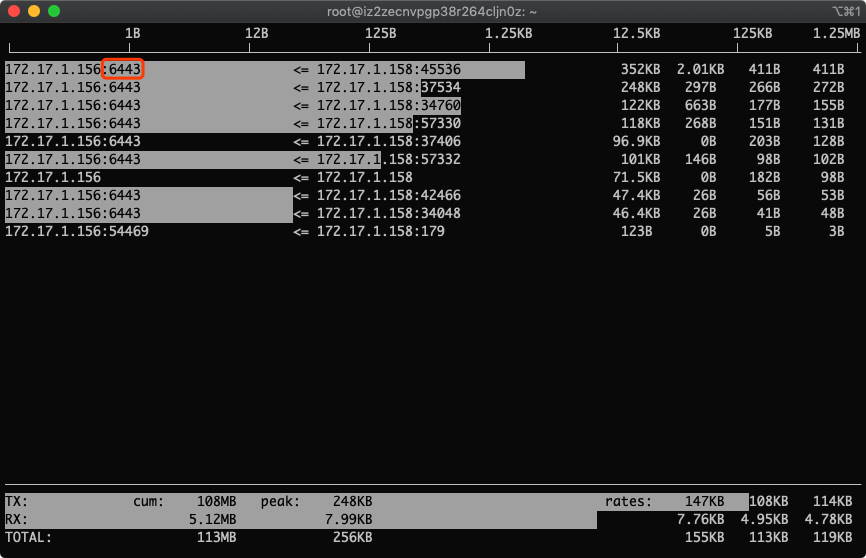
从零开始学习iftop流量监控(找出服务器耗费流量最多的ip和端口)
一、iftop是什么iftop是类似于top的实时流量监控工具。作用:监控网卡的实时流量(可以指定网段)、反向解析IP、显示端口信息等官网:http://www.ex-parrot.com/~pdw/iftop/二、界面说明>代表发送数据,< 代表接收数…...

第一篇博客------自我介绍篇
目录🔆自我介绍🔆学习目标🔆如何学习单片机Part 1 基础理论知识学习Part 2 单片机实践Part 3 单片机硬件设计🔆希望进入的公司🔆结束语🔆自我介绍 Hello!!!我是一名即已经步入大二的计算机小白。 --------…...
)
No suitable device found for this connection (device lo not available(网络突然出问题)
当执行 ifup ens33 出现错误:[rootlocalhost ~]# ifup ens33Error: Connection activation failed: No suitable device found for this connection (device lo not available because device is strictly unmanaged).1解决办法:[rootlocalhost ~]# chkc…...
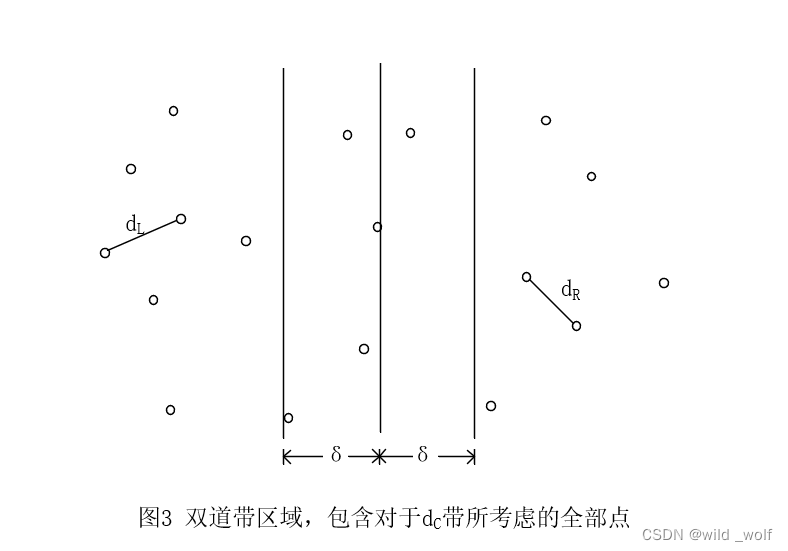
【算法设计技巧】分治算法
分治算法 用于设计算法的另一种常用技巧为分治算法(divide and conquer)。分治算法由两部分组成: 分(divide):递归解决较小的问题(当然,基准情况除外)治(conquer):然后,从子问题的解构建原问题的解。 传统上&#x…...

已解决kettle新建作业,点击保存抛出异常Invalid state, the Connection object is closed.
已解决kettle新建作业,点击保存进资源数据库抛出异常Invalid state, the Connection object is closed.的解决方法,亲测有效!!! 文章目录报错问题报错翻译报错原因解决方法联系博主免费帮忙解决报错报错问题 一个小伙伴…...

【设计模式】 工厂模式介绍及C代码实现
【设计模式】 工厂模式介绍及C代码实现 背景 在软件系统中,经常面临着创建对象的工作;由于需求的变化,需要创建的对象的具体类型经常变化。 如何应对这种变化?如何绕过常规的对象创建方法(new),提供一种“封装机制”来…...

Linux链表操作全解析
Linux C语言链表深度解析与实战技巧 一、链表基础概念与内核链表优势1.1 为什么使用链表?1.2 Linux 内核链表与用户态链表的区别 二、内核链表结构与宏解析常用宏/函数 三、内核链表的优点四、用户态链表示例五、双向循环链表在内核中的实现优势5.1 插入效率5.2 安全…...

微软PowerBI考试 PL300-选择 Power BI 模型框架【附练习数据】
微软PowerBI考试 PL300-选择 Power BI 模型框架 20 多年来,Microsoft 持续对企业商业智能 (BI) 进行大量投资。 Azure Analysis Services (AAS) 和 SQL Server Analysis Services (SSAS) 基于无数企业使用的成熟的 BI 数据建模技术。 同样的技术也是 Power BI 数据…...
指令的指南)
在Ubuntu中设置开机自动运行(sudo)指令的指南
在Ubuntu系统中,有时需要在系统启动时自动执行某些命令,特别是需要 sudo权限的指令。为了实现这一功能,可以使用多种方法,包括编写Systemd服务、配置 rc.local文件或使用 cron任务计划。本文将详细介绍这些方法,并提供…...

Linux云原生安全:零信任架构与机密计算
Linux云原生安全:零信任架构与机密计算 构建坚不可摧的云原生防御体系 引言:云原生安全的范式革命 随着云原生技术的普及,安全边界正在从传统的网络边界向工作负载内部转移。Gartner预测,到2025年,零信任架构将成为超…...

Python如何给视频添加音频和字幕
在Python中,给视频添加音频和字幕可以使用电影文件处理库MoviePy和字幕处理库Subtitles。下面将详细介绍如何使用这些库来实现视频的音频和字幕添加,包括必要的代码示例和详细解释。 环境准备 在开始之前,需要安装以下Python库:…...

Spring是如何解决Bean的循环依赖:三级缓存机制
1、什么是 Bean 的循环依赖 在 Spring框架中,Bean 的循环依赖是指多个 Bean 之间互相持有对方引用,形成闭环依赖关系的现象。 多个 Bean 的依赖关系构成环形链路,例如: 双向依赖:Bean A 依赖 Bean B,同时 Bean B 也依赖 Bean A(A↔B)。链条循环: Bean A → Bean…...

JavaScript基础-API 和 Web API
在学习JavaScript的过程中,理解API(应用程序接口)和Web API的概念及其应用是非常重要的。这些工具极大地扩展了JavaScript的功能,使得开发者能够创建出功能丰富、交互性强的Web应用程序。本文将深入探讨JavaScript中的API与Web AP…...

Rust 开发环境搭建
环境搭建 1、开发工具RustRover 或者vs code 2、Cygwin64 安装 https://cygwin.com/install.html 在工具终端执行: rustup toolchain install stable-x86_64-pc-windows-gnu rustup default stable-x86_64-pc-windows-gnu 2、Hello World fn main() { println…...
)
安卓基础(Java 和 Gradle 版本)
1. 设置项目的 JDK 版本 方法1:通过 Project Structure File → Project Structure... (或按 CtrlAltShiftS) 左侧选择 SDK Location 在 Gradle Settings 部分,设置 Gradle JDK 方法2:通过 Settings File → Settings... (或 CtrlAltS)…...
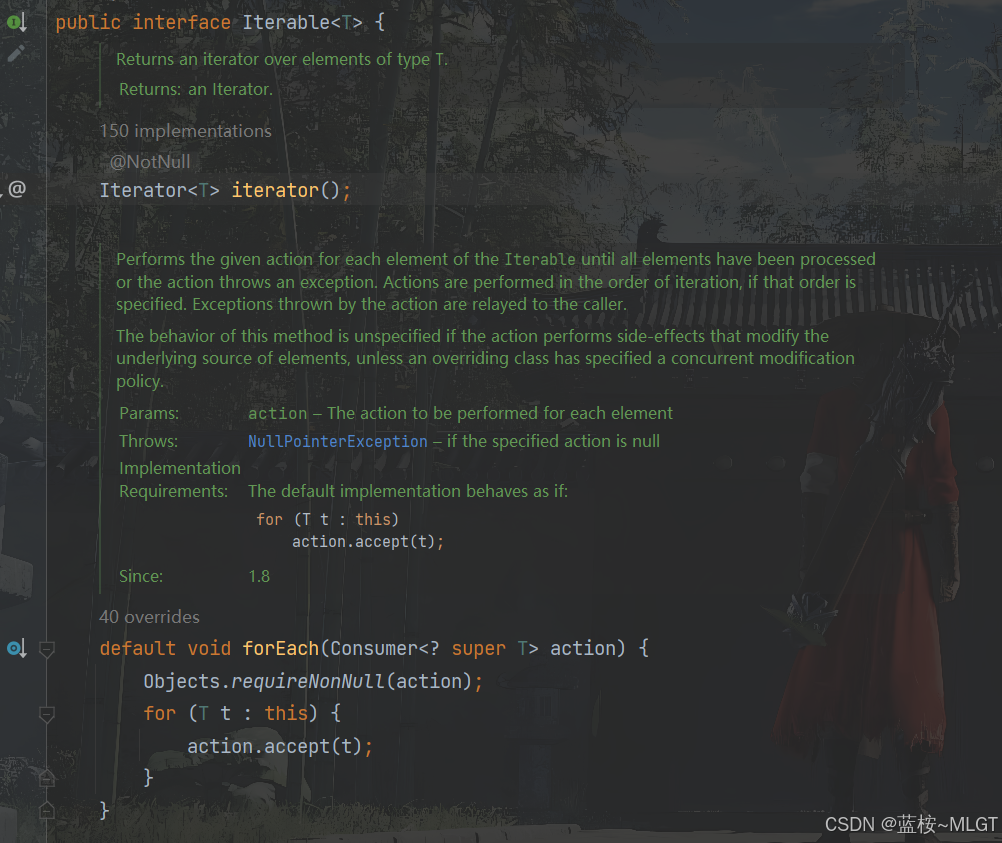
java高级——高阶函数、如何定义一个函数式接口类似stream流的filter
java高级——高阶函数、stream流 前情提要文章介绍一、函数伊始1.1 合格的函数1.2 有形的函数2. 函数对象2.1 函数对象——行为参数化2.2 函数对象——延迟执行 二、 函数编程语法1. 函数对象表现形式1.1 Lambda表达式1.2 方法引用(Math::max) 2 函数接口…...
